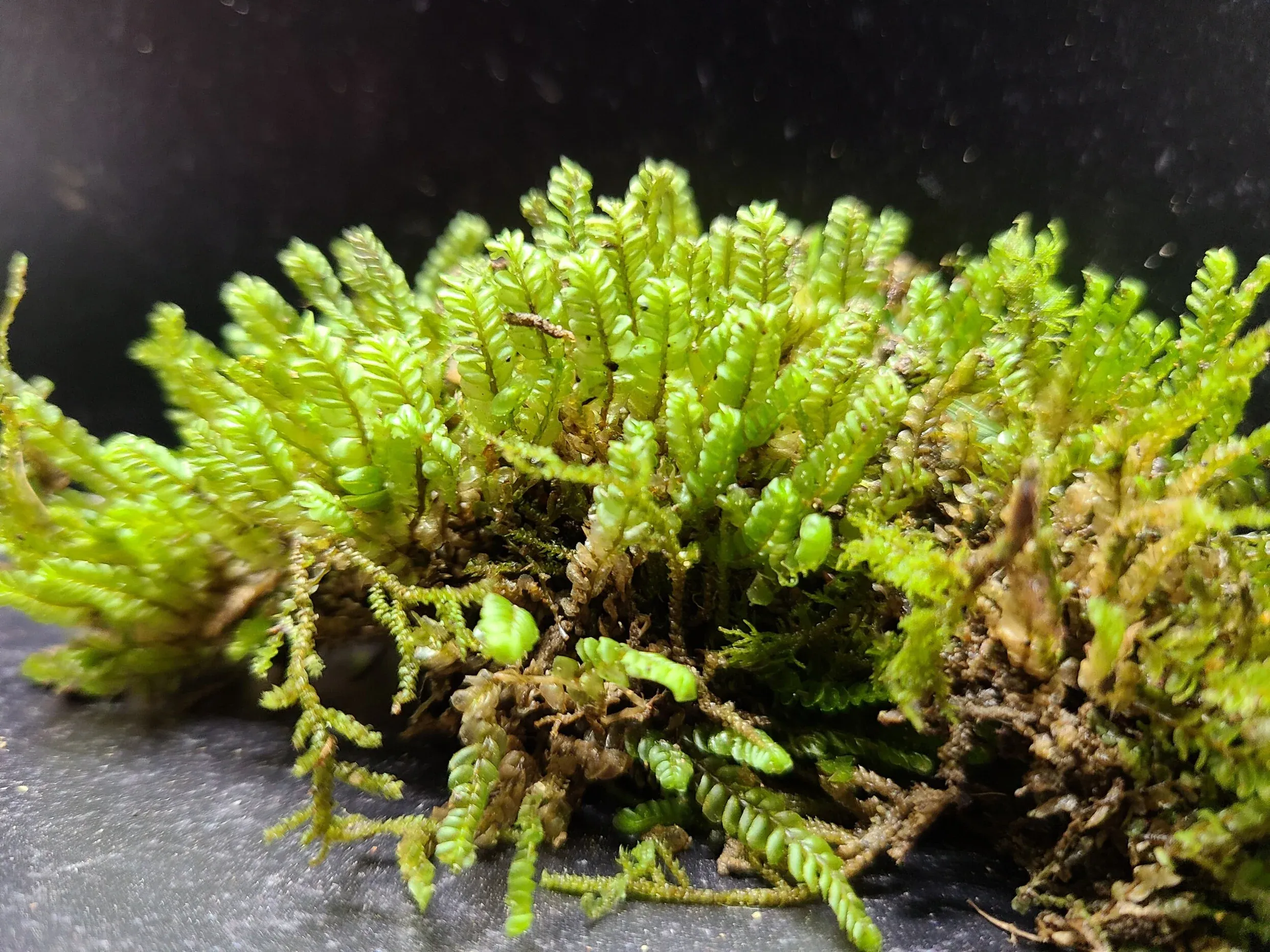
splittooh_2484x1863.jpg from: https://frogdaddy.net/products/copy-of-tree-moss-climacium-americanum
Introduction
In the vast and captivating world of bryophytes, the Plagiochila adianthoides (Sw.) Lindenb., commonly known as Plagiochila, stands out as a remarkable member of the Plagiochilaceae family. This enchanting moss has captured the hearts of enthusiasts worldwide with its delicate beauty and fascinating ecological roles. Join us as we embark on an engaging journey through the intricate world of this extraordinary plant.
Background
Before delving into the intricacies of Plagiochila adianthoides, it’s essential to understand its taxonomic classification. This moss belongs to the phylum Marchantiophyta, class Jungermanniopsida, order Jungermanniales, and family Plagiochilaceae. Its scientific name, Plagiochila adianthoides (Sw.) Lindenb., pays homage to its distinctive morphological features and honors the botanists who first described and classified it.
Main Content
Morphology and Identification
Plagiochila adianthoides is a striking moss that captivates with its intricate frondose growth form. Its flattened, ribbon-like stems are adorned with delicate, fern-like branches, creating a mesmerizing tapestry of green hues. The leaves are closely overlapping, forming a dense, feathery appearance. This moss is easily recognizable by its distinctive leaf shape, which is oblong to ovate, with a rounded apex and a decurrent base.
Global Distribution and Habitat
This remarkable moss has a widespread distribution, thriving in various regions across the globe. It can be found in tropical and subtropical areas, particularly in humid, shaded environments such as rainforests, cloud forests, and moist woodlands. Plagiochila adianthoides flourishes on decaying logs, tree trunks, and moist soil, forming lush carpets that add vibrant hues to the forest floor.
Ecological Roles and Adaptations
Plagiochila adianthoides plays a crucial role in its ecosystem, contributing to the intricate web of life. As a pioneer species, it aids in the colonization of disturbed areas, facilitating the establishment of other plant species and promoting biodiversity. Additionally, this moss serves as a microhabitat for various invertebrates, providing shelter and sustenance for these tiny creatures.
One of the remarkable adaptations of Plagiochila adianthoides is its ability to retain moisture. Its dense, overlapping leaves and flattened growth form help to minimize water loss, enabling the moss to thrive in humid environments. Furthermore, this moss possesses specialized structures called rhizoids, which anchor it to the substrate and facilitate the absorption of water and nutrients.
Case Studies/Examples
In the lush rainforests of Costa Rica, Plagiochila adianthoides carpets the forest floor, creating a verdant tapestry that captivates nature enthusiasts and researchers alike. Its presence is a testament to the region’s rich biodiversity and the delicate balance of the ecosystem.
Technical Table
| Characteristic | Description |
|---|---|
| Phylum | Marchantiophyta |
| Class | Jungermanniopsida |
| Order | Jungermanniales |
| Family | Plagiochilaceae |
| Scientific Name | Plagiochila adianthoides (Sw.) Lindenb. |
| Common Name | Plagiochila |
| Growth Form | Frondose |
| Leaf Shape | Oblong to ovate, rounded apex, decurrent base |
| Habitat | Humid, shaded environments (rainforests, cloud forests, moist woodlands) |
| Ecological Role | Pioneer species, microhabitat for invertebrates |
| Adaptations | Moisture retention, rhizoids for anchoring and nutrient absorption |
Conclusion
The Plagiochila adianthoides (Sw.) Lindenb., or Plagiochila, is a true marvel of nature, captivating enthusiasts with its delicate beauty and fascinating ecological roles. From its intricate morphology to its widespread distribution and adaptations, this moss serves as a reminder of the incredible diversity and resilience of life on our planet. As we bid farewell to this enchanting bryophyte, we are left with a thought-provoking question: How can we better appreciate and protect the intricate tapestry of life that surrounds us, ensuring that wonders like Plagiochila adianthoides continue to thrive for generations to come?